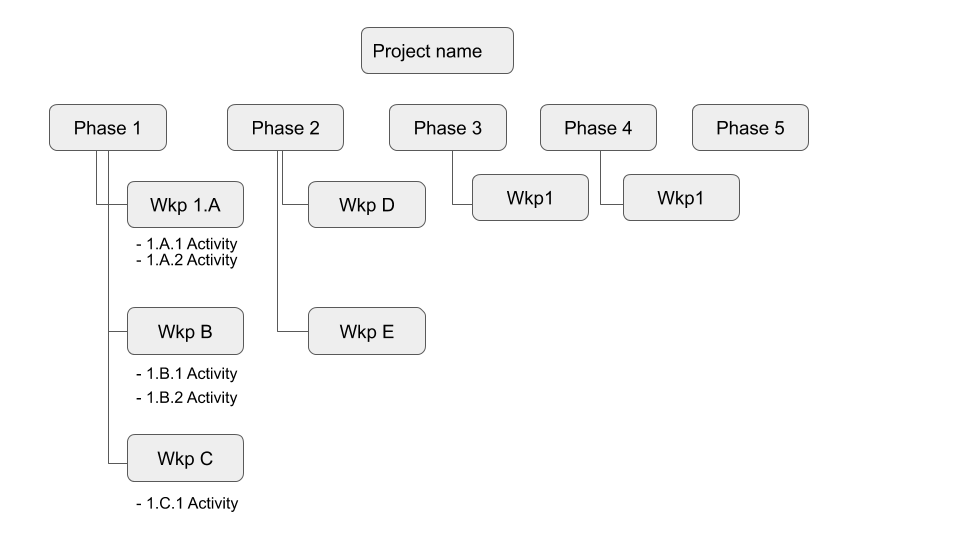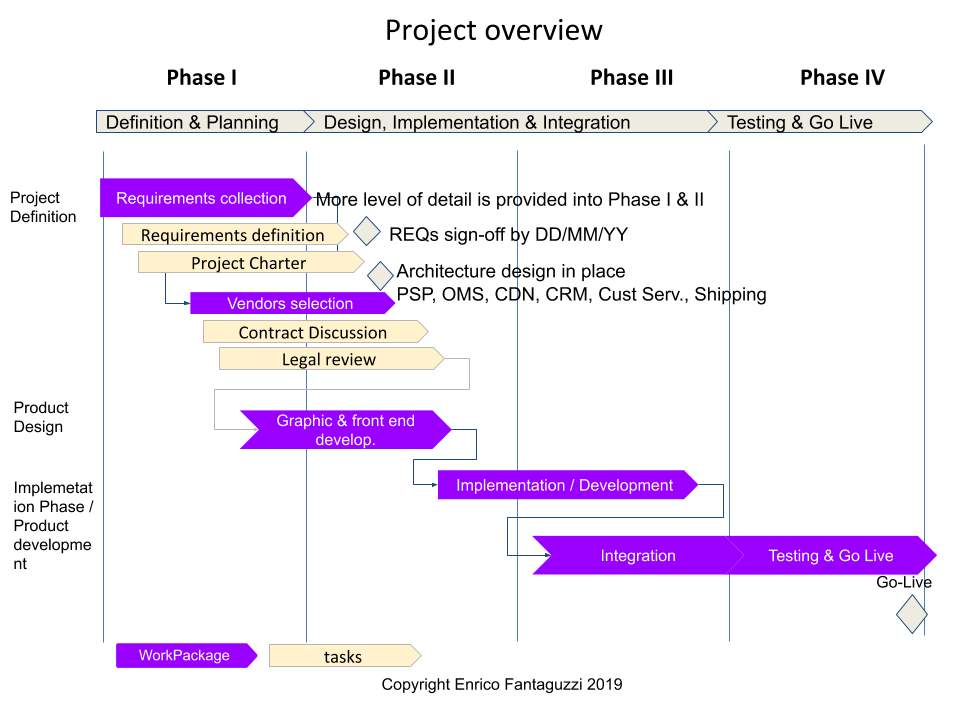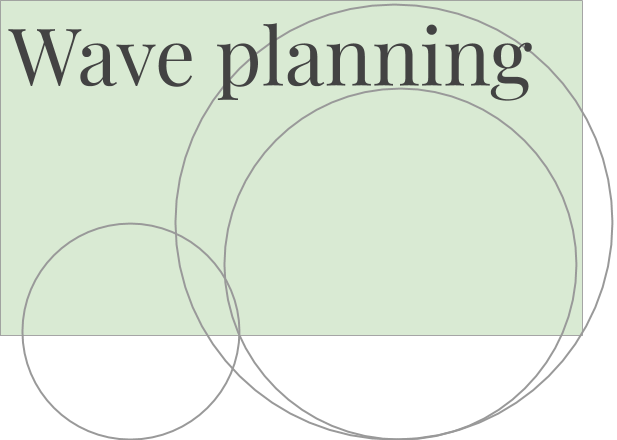
In the image we have a Work Breakdown Structure organized by phases, in which the activities in phase 1 are more detailed, i.e. they have a greater granularity, than the activities in the subsequent phases
The progressive elaboration, or Rolling Wave Planning, consists in planning at a very detailed level the activities that are closest to us in time, and planning in a less detailed way the activities that are later in time.
It is an extremely logical and resource efficient concept. The activities that are to be carried out immediately logically have more supporting information than activities that will have to take place in months and months and which will require the outputs of the previous activities (predecessors) to be implemented.
Progressive processing, one of the key concepts in Agile Project Management, is actually a basic concept also in the cascade methodology proposed by the Project Management Institute in the PMBoK
Let’s read the original version taken from the PMBoK 4th edition and then see it translated into Italian:
“Because of the potential for change, the project management plan is iterative and goes through progressive elaboration throughout the project’s life cycle. Progressive elaboration involves continuously improving and detailing a plan as more-detailed and specific information and more accurate estimates become available. Progressive elaboration allows a project management team to manage to a greater level of detail as the project evolves. ”
Translation: Due to the possibility of change, the project management plan is iterative and goes through progressive processing throughout the project life cycle.
Progressive processing involves continually improving the plan and adding details to the plan as more detailed and specific information – as well as more accurate estimates – becomes available.
Progressive processing allows the project team to manage a greater level of detail as the project evolves.
.

Download the free Powerpoint template.
A real example of rolling wave planning in a project meeting
A short time ago I attended a project meeting where the project leader outlined the main activities of the next six months. The stakeholders present ranged from the CEO to the Key Users for whom the difficulty lay in finding a balance between the need to explain some activities in detail and maintain an overview for the management. The result was that after presenting and discussing the macro activities of the whole project, we went into the details of the activities of the following six weeks and no more.
Rolling Wave Planning – Agile vs. Waterfall Project Management
Definition of Rolling Wave Planning in English and Italian with commentary
“Rolling wave planning is a form of progressive elaboration planning where the work to be accomplished in the near term is planned in detail and future work is planned at a higher level of the WBS. Therefore, work can exist at various levels of detail depending on where it is in the project life cycle. For example, during early strategic planning, when information is less defined, work packages may be decomposed to the milestone level. As more is known about the upcoming events in the near term it can be decomposed into activities.”
If we analyse the definition of rolling Wave Planning it means: Rolling Wave planning is a form of progressive processing in which the work that must be done in the short term is planned at a higher level of detail while the work that must be done later in the time is planned at a higher level than the Work Breakdown Structure which means a lower level of detail, (see image of the work break down structure which looks like a taxonomy). For example, during the early stages of strategic planning, when the information available to us is still scarce, work packages can be broken down to milestone level as we know more about upcoming developments. work packages can be broken down to activity level.
Work BreakDown Structure
Let’s see an example. If I have to build a house and suppose the project takes three years, we could have as a hypothesis:
- 4 phases: cost-benefit analysis, design, construction, testing.
- Work packages: Technical Analysis, Financial Analysis, Authorization Management; Design; Purchase of materials; Construction; Work management; Finalization.
- 10-15 milestones (intermediate stages): Phase 1: 1.1 cost estimates completed, 1.2 return on investment analysis completed; Phase 2: 2.2 Enlisted project team; 2.3 geological analysis completed; 2.4 completed drawing; 2.5 completed specifications; 2.6 permits obtained; Phase 3: 3.1 purchase of materials, 3.2 completed excavations; 3.3 Completed perimeter structure construction; 3.4 Finishes; 4: 4.1 testing; 4.2 obtaining habitability.
- Activities: architect and other professional recruitment; creation of requirements document; design cost analysis; construction cost analysis; permission request; ….Ho preso un esempio che possa essere comprensibile per tutti, ma non essendo del settore edilizio mi scuso per eventuali imprecisioni in anticipo.
Rolling wave planning is an approach to planning project activities, in which the activities closest to us in time are analyzed at a greater level of detail, while the activities more distant in time are planned at a higher level than the WBS or with less detail.
This concept, which was then adopted by the Agile discipline, is a concept belonging to the PMI methodology in cascade (waterfall or sequential).
We therefore understand that the criticism of the cascade methodology of being rigid and requiring too much initial analysis is therefore unfounded, the problem is actually the lack of knowledge of the methodology that causes the rigidity in its application.
In other words, both the approach suggested by the PMI and the Prince2 methodology have in themselves all the conceptual tools to guarantee their application in different contexts and to adapt to the various company situations. The lack of knowledge of the methodologies by the Project Managers and the Managers of the PMOs makes their application in the company ineffective.
The application of an agile methodology, which in itself does not require a defined timing for the activities, gives the feeling of less rigidity. However, this feeling of less rigidity does not guarantee compliance with times and costs which in many cases can be decisive factors for the success of projects.
